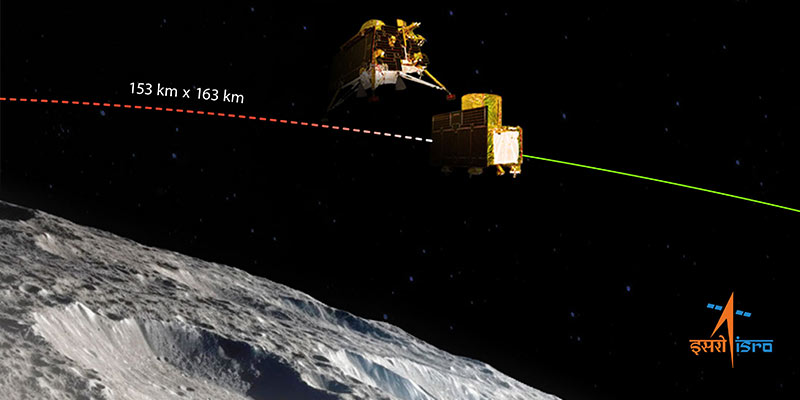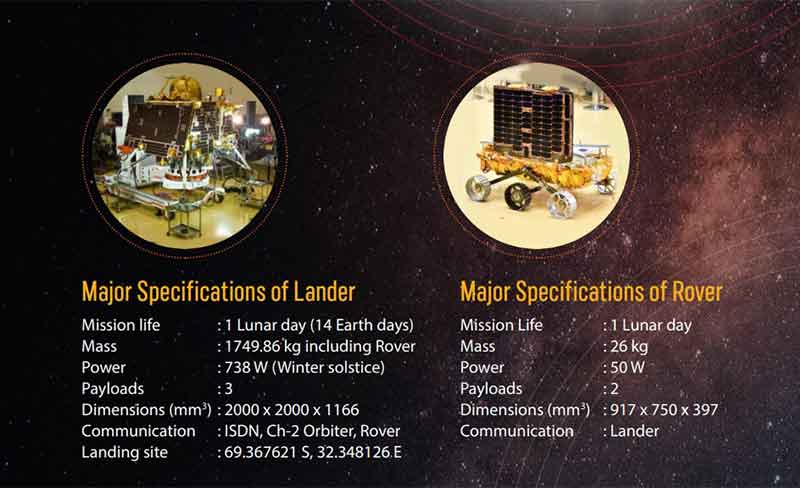- India
- Aug 17
Explainer - Propulsion Module, Lander Module & Rover of Chandrayaan-3
• The Lander Module of Chandrayaan-3 spacecraft comprising the Lander and Rover has successfully separated from the Propulsion Module.
• In the next step Lander Module will descend to a slightly lower orbit around the Moon on August 18.
• Indian Space Research Organisation (ISRO) launched its third moon mission Chandrayaan-3 on July 14.
• Post its launch, Chandrayaan-3 entered into the lunar orbit on August 5, following which orbit reduction maneuvers were carried out on August 6, 9, 14 and 16.
• As the mission progressed, a series of maneuvers were being conducted by ISRO to gradually reduce Chandrayaan-3’s orbit and position it over the lunar poles.
• The spacecraft is scheduled to make a soft-landing on the south polar region of the Moon on August 23.
Major modules of Chandrayaan-3
• Chandrayaan-3 consists of a Propulsion Module, Lander Module, and a Rover with an objective of developing and demonstrating new technologies required for interplanetary missions.
• The main function of the Propulsion Module was to carry the Lander Module from launch vehicle injection orbit to till Lander separation.
• The Propulsion Module also carries a Spectro-polarimetry of Habitable Planetary Earth (SHAPE) payload to study the spectral and polarimetric measurements of Earth from the lunar orbit.
• The Lander payload will be responsible for the safe landing. Landing on the Moon’s South Pole is a challenging task owing to the uneven lunar terrain.
• The Lander will have the capability to soft-land at a specified lunar site and deploy the Rover.
• After the soft-landing, the Rover would come out of the Lander Module and study the surface of the Moon through its payloads to derive the chemical composition and infer mineralogical composition to further enhance understanding of the lunar surface.
• Rover, which has a mission life of one Lunar Day (14 Earth Days) also has another payload to determine the elemental composition of lunar soil and rocks around the lunar landing site.
• The Lander and Rover have scientific payloads to carry out experiments on the lunar surface.
Lander payloads:
i) Radio Anatomy of Moon Bound Hypersensitive ionosphere and Atmosphere (RAMBHA) - To measure the near surface plasma (ions and electrons) density and its changes with time.
ii) Chandra’s Surface Thermo physical Experiment (ChaSTE) - To carry out the measurements of thermal properties of lunar surface near polar region.
iii) Instrument for Lunar Seismic Activity (ILSA) - To measure seismicity around the landing site and delineating the structure of the lunar crust and mantle.
iv) Laser Retroreflector Array (LRA) - It is a passive experiment to understand the dynamics of Moon system.
Rover payloads:
i) LASER Induced Breakdown Spectroscope (LIBS) - Qualitative and quantitative elemental analysis to derive the chemical composition and infer mineralogical composition to further our understanding of lunar surface.
ii) Alpha Particle X-Ray Spectrometer (APXS) - To determine the elemental composition (Mg, Al, Si, K, Ca,Ti, Fe) of lunar soil and rocks around the lunar landing site.
Manorama Yearbook app is now available on Google Play Store and iOS App Store


